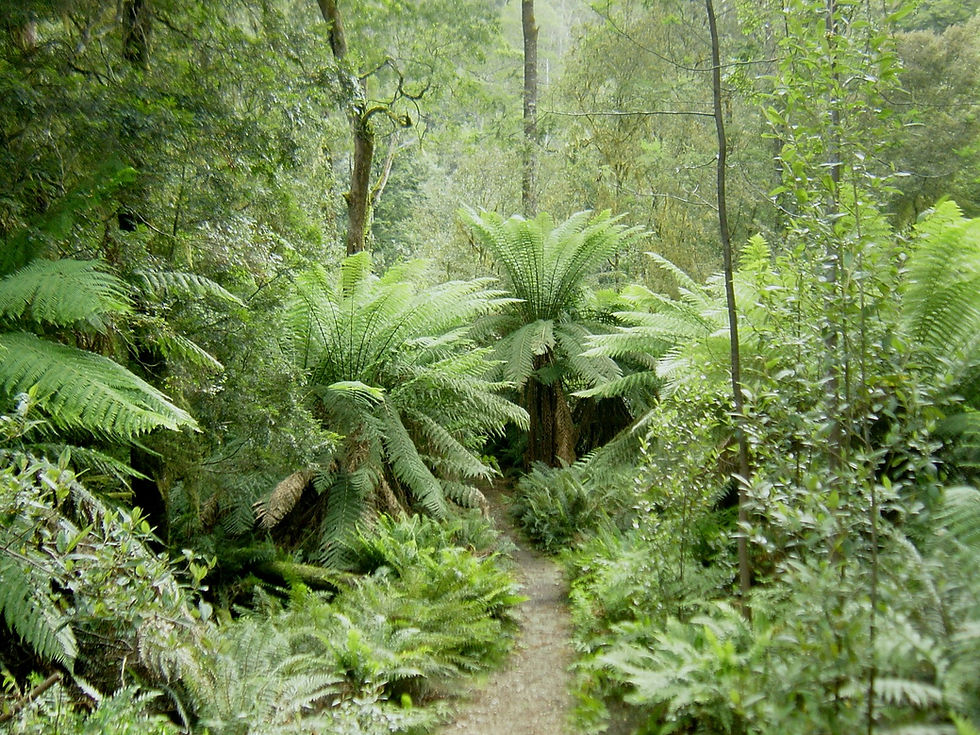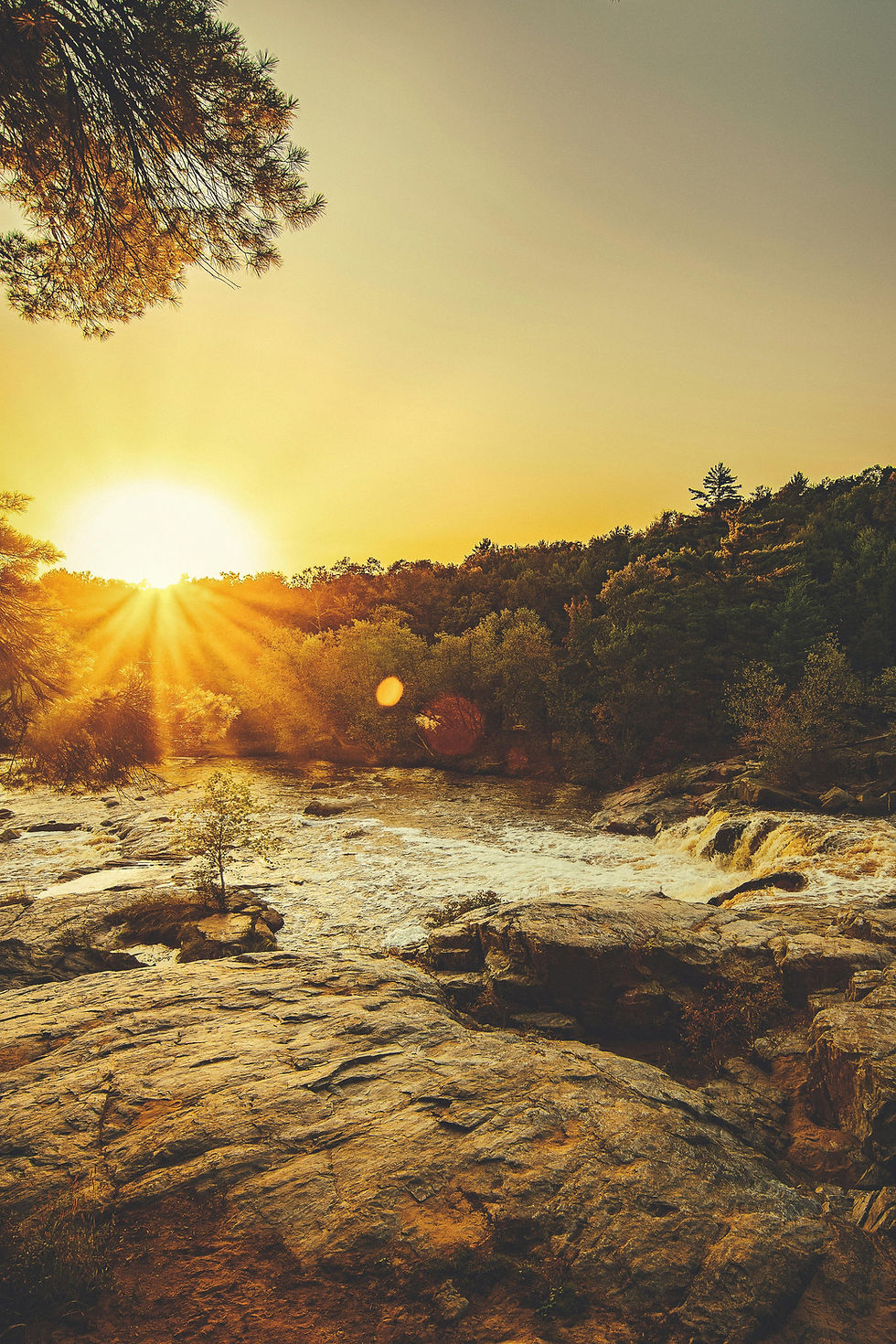weLOG #40 Discovering Tarkine Rainforest
- Joanna Arai
- Apr 9, 2024
- 4 min read
Nestled within the remote wilderness of Tasmania, Australia, lies a hidden treasure of biodiversity and natural splendor – the Tarkine Rainforest. Spanning approximately 447,000 hectares in Tasmania's northwest, this ancient landscape is a sanctuary for unique flora and fauna found nowhere else on Earth.
The Tarkine Rainforest is a living relic of the ancient supercontinent Gondwana, boasting towering myrtle, sassafras, and Huon pine trees that dominate the landscape. Beneath the dense canopy, a diverse array of plants, fungi, and invertebrates thrive, including rare and endemic species like the Tasmanian devil, spotted-tailed quoll, and wedge-tailed eagle. These creatures play vital roles in maintaining the forest's delicate ecosystem balance.
Tasmanian devil (Sarcophilus harrisii), a marsupial known for its fierce demeanor and unmistakable black fur. Despite its small stature, it plays a vital role in maintaining ecosystem balance, primarily as a scavenger, helping to keep populations of pests and carrion in check.
Venturing deeper into the forest, one may encounter the elusive spotted-tailed quoll (Dasyurus maculatus), a mesmerizing carnivore adorned with distinctive markings that resemble a painter's brush strokes. This apex predator relies on stealth and cunning to stalk its prey through the dense undergrowth, embodying the raw power and grace of nature's hunters.
Beneath the canopy, the ancient myrtle tree (Nothofagus cunninghamii) stands as a silent sentinel, its gnarled branches reaching skyward in a timeless embrace. Endemic to Tasmania, these majestic giants are among the oldest living organisms on Earth, with some specimens dating back thousands of years.
Aboriginal peoples have inhabited the region for over 40,000 years. The Palawa people, who have a spiritual connection to the land and its natural resources left behind traces of their presence such as shell middens and rock art. The rainforest's history is intertwined with theirs, offering insights into ancient ways of life and spiritual beliefs. However, like many indigenous communities worldwide, the Palawa people faced displacement and dispossession during European colonization, leading to a loss of their traditional connection to the Tarkine and other ancestral lands.
The forest carries remnants of its industrial past as well, including scars from logging operations. These patches of regrowth serve as reminders of the ongoing struggle to balance human activities with conservation efforts. Logging operations, driven by the demand for timber products, have historically cleared vast swathes of forest, disrupting habitats and fragmenting ecosystems. The loss of native vegetation not only reduces biodiversity but also contributes to soil erosion and impacts water quality in nearby waterways. Similarly, mining activities pose a threat... The region's rich mineral deposits, including tin, zinc, and copper, have attracted mining companies seeking to exploit these resources. Open-cut mining operations disrupt habitats, especially via fragmenting the landscape.
As we reflect on the intricate life within the Tarkine Rainforest, it's evident that this ancient wilderness is not just a place of breathtaking beauty but also a living reminder of the delicate balance between human activity and environmental conservation. As we move forward, it's imperative that we honor the legacy of the Palawa people and strive to protect this precious ecosystem for future generations to cherish and learn from. Only through sustainable stewardship can we ensure that the Tarkine Rainforest remains a sanctuary for biodiversity and a source of inspiration for all who wander beneath its verdant canopy.
(Tarkine Rainforest, photo below by Angela Thomas)

AROUND THE WORLD 🌏
by Kenny
KOALAS - FROM THE ABUNDANCE TO THE VORTEX OF EXTINCTION
Koalas once existed in abundance, a fact that was probably taken for granted as they were once hunted in droves for their fur. Over time, our cute and furry little friends have made the endangered list and are now trying to avoid extinction.
The existence of koalas is at risk because of reasons such as land clearing and logging resulting in habitat loss as well as climate change. Climate change could shrink their food supply and thus further affect their habitat. There are several factors threatening the existence of koalas and though there is an interest in preserving our disarming little friends, without significant policy changes, the threat to koalas will continue to grow and send them spiraling into a vortex of extinction.
TROPICAL FORESTS FOREVER
The Brazilian government introduced a new initiative to incentivize tropical forest conservation by offering payment per hectare of preserved or restored forest. The other side of this initiative, which should also serve as a reason for strict adherence, landowners will face penalties if deforestation occurs.
The initiative requires substantial funding and while there seems to be interest from the international community, no country has committed to participating just yet. This system aims to reward countries for conserving forests annually and focuses on forest preservation rather than just carbon emissions reduction due to the critical role of tropical forests in maintaining biodiversity and a balanced ecosystem.
This system is a step in the right direction and has potential but though there is interest, will countries be willing to participate? Is the incentive enough to get countries to commit to “Tropical Forests Forever”? Only time will tell.
Photo credit and more info about Tasmanian Devil

WHAT WE'RE READING
There you have it, dear friends!
Till next time!
Joanna Arai
💛



Comments